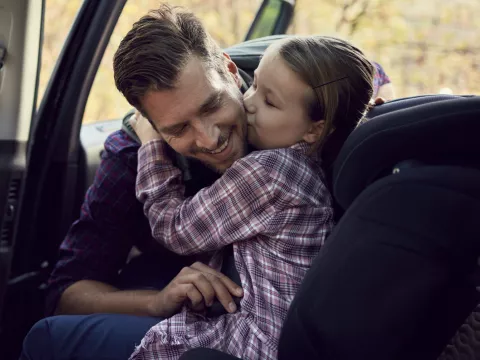- AdventHealth

It can be stressful to imagine the worst-case scenario affecting your community. You worry about your family’s safety and ability to continue everyday activities. However, one of the best ways to overcome the fear of the unknown is to plan ahead. By familiarizing yourself with potential scenarios and stocking up on essential supplies, you’ll be able to calmly spring into action when disaster strikes.
What Should I Be Ready For?
It’s important to understand the possible hazards in your geographic area. Throughout the U.S., that can mean severe thunderstorms, tornados, hurricanes and flooding. You may know something is coming several days in advance, or you may have little time to get ready. The Federal Emergency Management Agency (FEMA) recommends that you are always prepared to hunker down and be self-sufficient in your home for at least three days. In extreme situations, evacuation may be necessary. Make sure you and your family know where you’ll be heading and what you need to bring.
What Should I Have on Hand?
In the event of a natural disaster, there’s a chance you’ll need to stay sheltered in your home for an uncertain amount of time. Take a moment to consider what you’d need if you found yourself stuck without the use of normal utilities and appliances. Keeping some non-perishable necessities well-stocked and important supplies on hand is a smart way to stay ahead of any shelter-in-place emergency situations.
Here’s a list of the ideal items to have available:
- Bottled water (estimate one gallon per person per day)
- Cash
- Extra batteries
- First aid kit
- Flashlight
- Food (canned goods, crackers, cereals and other staples that don’t need refrigeration or special preparation)
- Hygiene items (toilet paper, toothpaste)
- Manual can opener and kitchen utensils
- Portable, battery-powered TV or radio
- Your family’s special needs items, such as prescription medications, contact lens solution, hearing aid batteries and infant care items
Create Your Disaster Supply Kit
Even if evacuation may be uncommon in your area, it’s a good idea to have a simplified, portable version of this list — a disaster supply kit — ready at all times. It should include:
An emergency contact card for every member of your family
- Bottled water
- Cash
- Copies of identification and important documents
- First aid kit
- Flares
- Flashlight and batteries
- Jumper cables
- Shelf-stable snacks
- Sunscreen
- Your family’s special needs items (medication, baby formula, etc.)
What If I Need to Evacuate?
Always heed government-mandated evacuation orders to keep yourself and your family safe. Check with your local authorities and government about evacuation procedures and shelter plans. They may have specific or updated evacuation procedures for unique situations, like a global health crisis like a pandemic. Try to keep your car’s gas tank full during hurricane season, when emergency evacuation would be most likely.
When preparing to leave your home:
- Dress comfortably and wear layers and sturdy, closed-toed shoes to protect from the elements
- Grab your disaster supply kit
- Pack clothing, food, water and medications for family members and pets
- Secure your home as much as possible by locking doors, sealing windows and making a sandbag barrier against areas of the yard or street that may flood
- Unplug appliances and electronics except freezers and refrigerators, which should only be unplugged if there is a serious risk of flooding
What If I Need Emergency Medical Help?
We’re always here for you, but when conditions are most dangerous, we may not be able to come right to you. Though our hospitals’ emergency response teams work 24/7 to care for patients, there are times when the facilities must lock down, ambulances can’t drive and helicopters won’t fly.
Hospitals also aren’t able to function like a shelter or take in evacuees without a health need. That’s why it’s so crucial to anticipate your family’s needs in order to maintain health during an emergency as well as prevent injury and illness. Take comfort in knowing our medical team and emergency personnel are available to you as long as safe travel is possible.
Remember that communication is the key to successful disaster preparedness. Once you’ve stocked up on the essentials, ensure your family knows what to do. Determine your go-to safe room as well as your escape route. With a plan and all of the important supplies you may need, you can enter each new season calmly and confidently.



